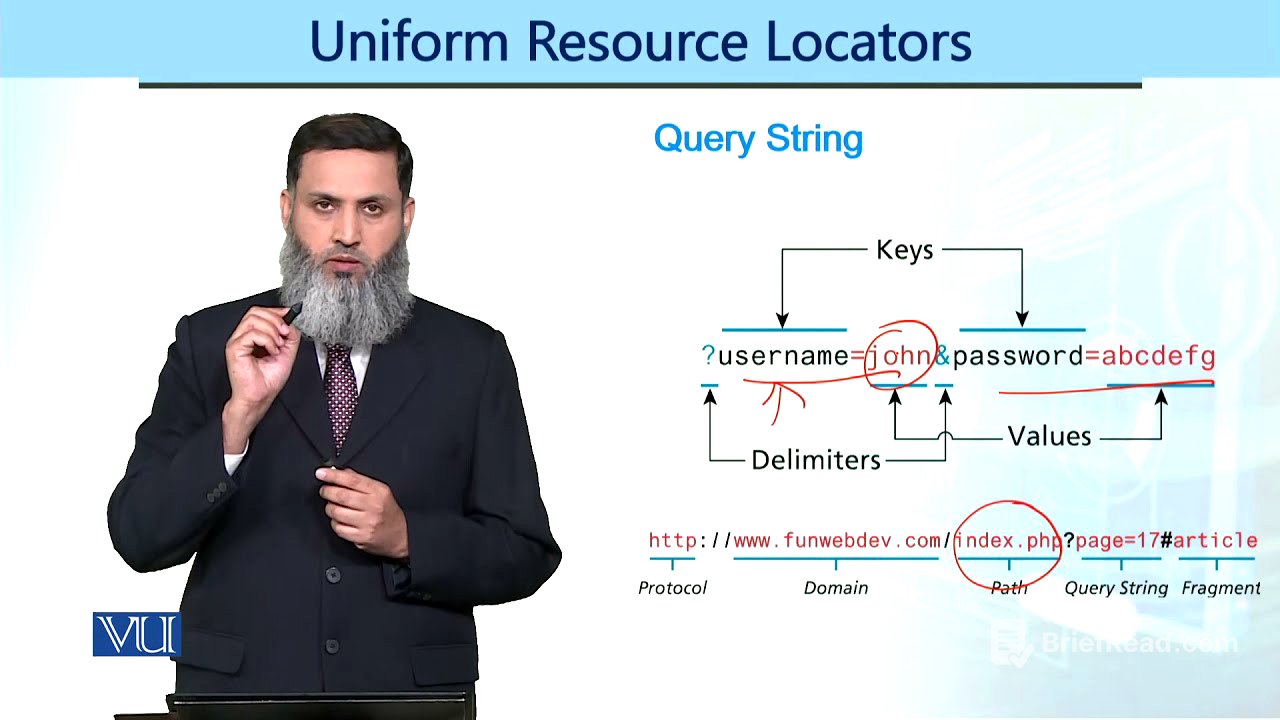TLDR;
This video explains the structure and components of a Uniform Resource Locator (URL). It covers the different parts of a URL, including the protocol (HTTP or HTTPS), domain name, port, path to a file, query parameters, and fragment identifiers. The video also discusses how URLs are used to access resources on the World Wide Web and how different parts of the URL work together to locate and retrieve specific content.
- URLs consist of several components, including protocol, domain, port, path, parameters, and fragment.
- The protocol indicates how to access the resource (HTTP/HTTPS).
- The domain name is translated into an IP address by DNS servers.
- Query parameters pass information to the server.
- Fragments link to specific sections within a webpage.
Introduction to URLs [0:00]
The video introduces the concept of a Uniform Resource Locator (URL) and its role in the World Wide Web. A URL consists of several components, including the protocol, domain name, path, and parameters. The presenter emphasizes the importance of understanding these components to effectively navigate and access resources on the internet.
Protocol: HTTP vs HTTPS [0:13]
The video explains the role of the protocol in a URL, focusing on HTTP (Hypertext Transfer Protocol) and HTTPS (Hypertext Transfer Protocol Secure). HTTP is used for unsecured websites where sensitive information is not transmitted, while HTTPS is used for secure communication, such as websites that handle personal or financial data. The protocol specifies the method through which the website is accessed.
Domain Names and DNS [0:35]
The video discusses the domain name component of a URL and its function. The domain name is a human-readable address that is translated into an IP address by a Domain Name System (DNS) server. This translation allows users to access websites using easy-to-remember names instead of numerical IP addresses.
Port Numbers in URLs [0:50]
The video explains the function of port numbers in URLs. HTTP servers typically operate on port 80, while HTTPS servers use port 443. If a specific port is not specified in the URL, the browser defaults to these standard ports based on the protocol used.
File Paths in URLs [0:01]
The video describes the file path component of a URL, which specifies the location of a particular file or resource on the server. If no specific file is mentioned, the server is configured to return a default file, such as "index.html" for static websites or "index.php" for dynamic websites.
Query Parameters in URLs [0:01]
The video discusses query parameters, which are used to pass additional information to the server. These parameters are appended to the URL after a question mark (?) and consist of key-value pairs separated by ampersands (&). Query parameters are commonly used in dynamic websites to handle user input, search queries, or pagination. For example, username=john&password=abcd passes the username "john" and password "abcd" to the server.
Fragment Identifiers in URLs [0:01]
The video explains fragment identifiers, which are used to link to a specific section within a webpage. Fragment identifiers are appended to the URL after a hash symbol (#) and specify an anchor point within the HTML document. When a URL with a fragment identifier is accessed, the browser scrolls directly to the specified section of the page.









